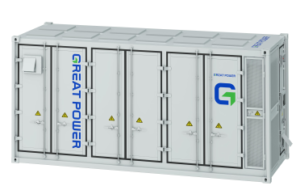P-Type vs. N-Type Solar Cells: A Technological Evolution
•
Why are solar manufacturers shifting from traditional P-type to N-type cells? This fundamental change in semiconductor doping is driving the next generation of high-performance photovoltaics.
P-type solar cells use boron-doped silicon while N-type cells use phosphorus-doped silicon, with N-type offering better efficiency potential (25%+) and reduced light-induced degradation (LID).
The solar industry's transition from P-type to N-type technology represents a significant evolution in photovoltaic materials, with implications for efficiency, durability, and manufacturing processes worldwide.
What Are the Conductivity Mechanism Differences Between P-Type and N-Type?
How does silicon doping create opposite charge carriers? The atomic-level differences between these cell types determine their fundamental electrical properties.
P-type silicon creates positive charge carriers (holes) through boron doping, while N-type silicon creates negative charge carriers (electrons) through phosphorus doping - this fundamental difference impacts performance and degradation.
The Physics of Solar Cell Doping
-
Charge Carrier Creation
- P-type: Boron atoms create "holes" (missing electrons)
- N-type: Phosphorus atoms provide extra electrons
-
Performance Characteristics Parameter P-Type N-Type Base Material Boron-doped Phosphorus-doped Majority Carrier Holes Electrons Minority Carrier Lifetime Shorter Longer -
Practical Implications
- N-type's longer carrier lifetime enables higher efficiency
- P-type more susceptible to boron-oxygen defects
- N-type requires cleaner manufacturing environment
"N-type cells maintain 97% of initial output after 25 years versus 90% for P-type, making them particularly valuable for long-term installations" - International Technology Roadmap for Photovoltaics
Which Category Do TOPCon and HJT Technologies Fall Into?
Are the latest solar innovations using P-type or N-type architecture? Next-generation technologies overwhelmingly favor N-type substrates for their superior performance.
TOPCon (Tunnel Oxide Passivated Contact) and HJT (Heterojunction) technologies both use N-type silicon wafers, achieving efficiencies above 24% with better temperature coefficients than P-type PERC cells.
Next-Generation N-Type Technologies
-
TOPCon Characteristics
- Oxide passivation layer reduces surface recombination
- Compatible with existing P-type production lines
- Efficiency potential: 24-26%
-
HJT Advantages Feature Benefit Amorphous silicon layers Excellent surface passivation Symmetrical structure Bifaciality over 90% Low-temperature process Less wafer warping -
Manufacturing Transition
- TOPCon: Easier upgrade from PERC
- HJT: Requires new production lines
- Both reduce LID to <0.5% versus 1-3% for P-type
Industry Trend: Over 60% of new solar manufacturing capacity being built is N-type, with TOPCon dominating current expansions and HJT gaining market share.
Why Are N-Type Cells Replacing P-Type Cells?
What's driving the solar industry's billion-dollar shift to N-type technology? The combination of performance advantages and decreasing cost premiums makes N-type the new standard.
N-type solar cells are replacing P-type because they offer 1-3% higher efficiency, virtually no light-induced degradation, better temperature coefficients, and narrowing cost differences as production scales up.
The Five Key Drivers of N-Type Adoption
-
Performance Advantages
- Higher efficiency potential (25% vs 22% for P-type)
- Lower power loss in high temperatures (-0.3%/°C vs -0.4%/°C)
- Better weak light performance
-
Reliability Improvements
- No boron-oxygen light-induced degradation
- Lower LeTID (light and elevated temperature degradation)
- Longer lifespan with slower degradation
-
Economic Factors Cost Factor 2020 2024 N-type premium +$0.08/W +$0.03/W Efficiency ROI 5 years 2 years Market share 15% 45% -
Manufacturing Evolution
- Larger ingots reducing N-type wafer costs
- Improved phosphorus doping techniques
- Higher yields in cell production
-
Sustainability Benefits
- Longer-lasting systems reduce replacement needs
- Higher energy yield per material used
- Compatible with thinner wafers (saving silicon)
Industry Projection: N-type technologies will surpass 70% market share by 2027 as new manufacturing capacity comes online and P-type lines are converted or retired.
Conclusion
The solar industry's shift from P-type to N-type cells represents a fundamental technology evolution, delivering higher efficiency, greater reliability, and better long-term value - making N-type the clear future of photovoltaics.








